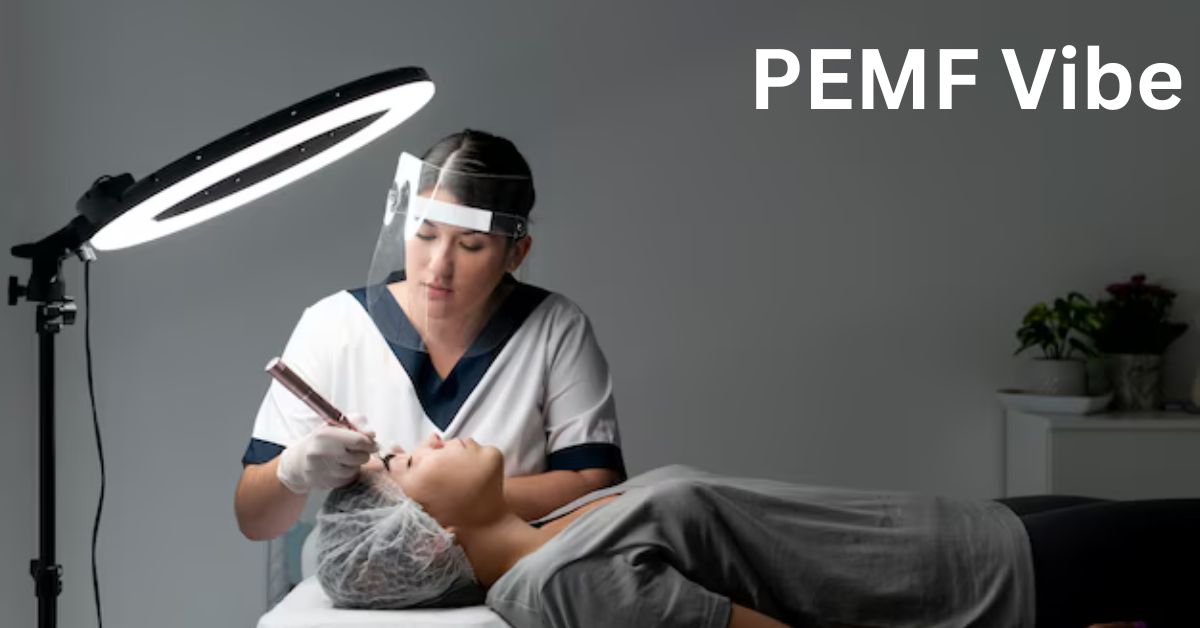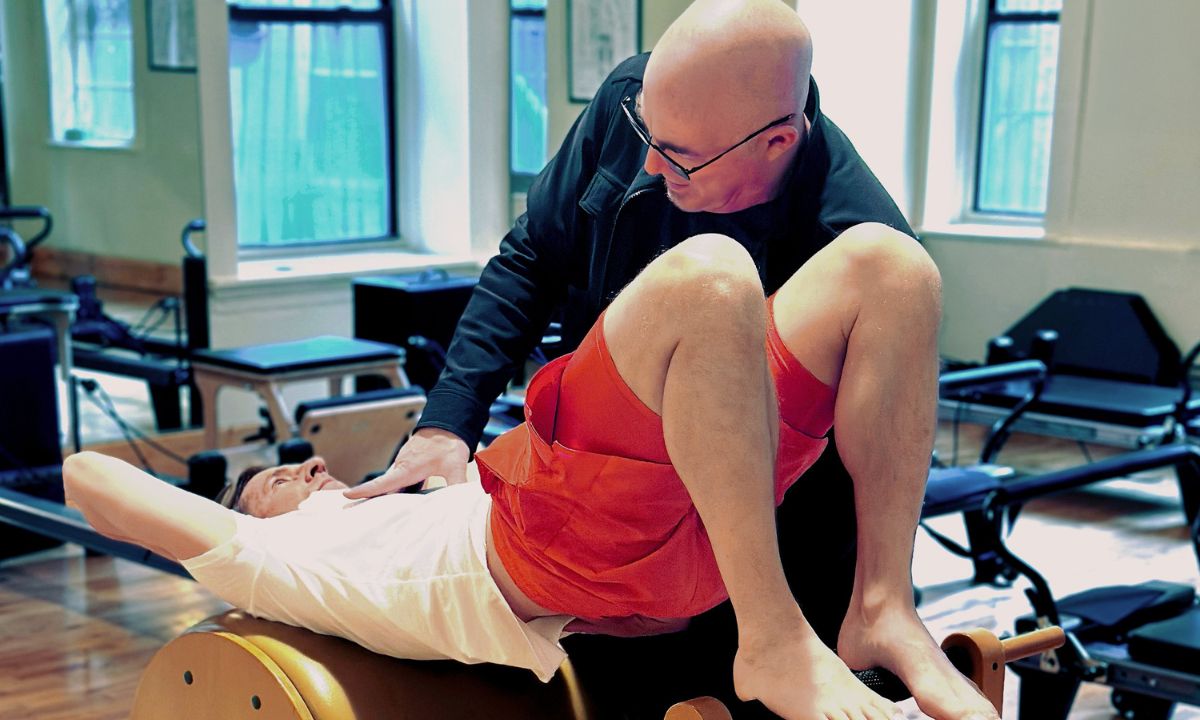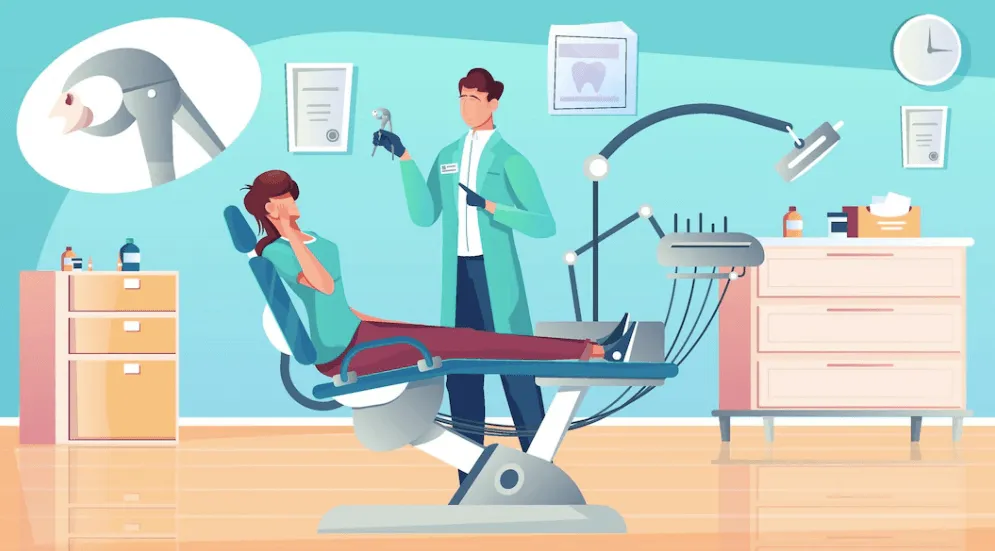Health
PEMF Vibe: Exploring the Benefits of Pulsed Electromagnetic Therapy

In the realm of alternative wellness, PEMF Vibe is making waves for its innovative approach to improving health and well-being. Pulsed Electromagnetic Field (PEMF) therapy has gained attention for its ability to enhance physical and mental health through non-invasive, pain-free methods. By emitting electromagnetic waves, PEMF Vibe devices interact with the body at a cellular level, promoting healing, reducing pain, and enhancing overall vitality.
Understanding PEMF Therapy
PEMF therapy involves the use of electromagnetic waves to stimulate the body’s natural healing processes. These waves penetrate deeply into tissues, muscles, and bones, helping to rejuvenate cells and improve circulation. PEMF Vibe devices are designed to harness this technology, offering a user-friendly way to experience the therapy’s benefits.
The Science Behind PEMF Vibe
The science behind PEMF Vibe is rooted in the body’s natural electromagnetic frequencies. Every cell in the body communicates through electrical signals. When cells are damaged or stressed, these signals can become disrupted. PEMF therapy works by restoring the normal frequency of these signals, enabling cells to function optimally. This restoration leads to improved healing and reduced inflammation.
Health Benefits of PEMF Vibe
One of the most appealing aspects of PEMF Vibe is its versatility. It offers a range of health benefits, from reducing chronic pain to enhancing recovery after injury. By promoting better oxygenation and nutrient delivery at the cellular level, it can also improve energy levels and sleep quality. Individuals struggling with joint pain, arthritis, or muscle soreness often find relief through regular use of PEMF devices.
Pain Management with PEMF Vibe
Chronic pain is a widespread issue that affects millions. PEMF Vibe provides a drug-free alternative for managing pain, making it a valuable tool for those seeking relief without relying on medication. By targeting the source of pain at the cellular level, it addresses the root cause rather than merely masking symptoms.
Enhancing Recovery and Rehabilitation
Athletes and individuals recovering from injuries often turn to PEMF Vibe to accelerate healing. The therapy promotes faster recovery by increasing blood flow and stimulating the repair of damaged tissues. Whether it’s a sports injury or post-surgical rehabilitation, PEMF therapy supports the body’s natural healing processes, reducing downtime and enhancing outcomes.
Improving Sleep Quality
Sleep is crucial for overall health, yet many struggle with insomnia or restless nights. PEMF Vibe has been shown to help regulate sleep patterns by calming the nervous system and reducing stress. The therapy creates an environment conducive to relaxation, helping users achieve deeper, more restorative sleep.
Boosting Mental Clarity and Focus
In addition to its physical benefits, PEMF Vibe also has a positive impact on mental health. By improving circulation and reducing inflammation, it can enhance brain function, leading to improved clarity, focus, and mood. Many users report feeling more energized and alert after regular sessions with PEMF devices.
Supporting Bone Health
Bone health is a concern for many, especially as they age. PEMF Vibe devices have been shown to stimulate bone density and promote healing in fractures. The therapy enhances calcium uptake and supports the regeneration of bone tissue, making it an effective tool for preventing and treating osteoporosis.
Reducing Stress and Anxiety
Stress and anxiety are pervasive in today’s fast-paced world. PEMF Vibe offers a natural way to combat these issues by promoting relaxation and balancing the body’s stress response. The electromagnetic waves work to stabilize the nervous system, creating a calming effect that helps users feel more at ease.
How to Use PEMF Vibe Devices
Using a PEMF Vibe device is simple and convenient. Most devices come with customizable settings, allowing users to tailor the therapy to their specific needs. Whether you’re targeting a particular area of the body or seeking overall relaxation, the process is straightforward and can easily be incorporated into daily routines.
Who Can Benefit from PEMF Vibe?
PEMF therapy is suitable for a wide range of individuals. Whether you’re an athlete looking to optimize performance, someone dealing with chronic pain, or simply aiming to enhance your overall health, PEMF Vib’e can provide significant benefits. It’s a safe and effective option for people of all ages and fitness levels.
Safety and Effectiveness of PEMF Vibe
One of the standout features of PEMF Vib’e is its safety profile. The therapy is non-invasive and free of side effects, making it an appealing choice for those wary of traditional treatments. Clinical studies have demonstrated its effectiveness in various applications, solidifying its place as a trusted wellness tool.
Integrating PEMF Vibe into Daily Life
Incorporating PEMF Vib’e into your daily routine is as easy as setting aside a few minutes each day. Regular sessions can help maintain overall wellness, prevent injuries, and manage stress. The portability of many devices also allows users to benefit from the therapy at home, work, or even while traveling.
The Future of PEMF Therapy
As interest in alternative health solutions continues to grow, PEMF Vib’e is at the forefront of this movement. Advances in technology are making devices more accessible and effective, paving the way for widespread adoption. The future of PEMF therapy is bright, with ongoing research uncovering new applications and benefits.
Conclusion
PEMF Vibe represents a revolutionary approach to health and wellness, offering a natural and effective way to address a variety of concerns. From pain management and improved sleep to enhanced recovery and mental clarity, the therapy’s benefits are far-reaching. As more people discover the power of PEMF, it’s clear that this innovative technology has the potential to transform lives and redefine how we approach health.
FAQs
What is PEMF Vibe?
PEMF Vib’e refers to devices that use Pulsed Electromagnetic Field therapy to promote healing and overall wellness.
Is PEMF therapy safe?
Yes, PEMF therapy is a non-invasive and safe treatment with no known side effects when used as directed.
Who can use PEMF Vib’e devices?
PEMF Vibe devices are suitable for individuals of all ages and can benefit athletes, those with chronic pain, and anyone seeking improved well-being.
How often should I use PEMF Vibe?
Frequency depends on individual needs, but regular sessions—daily or several times a week—are often recommended for optimal results.
Can PEMF therapy replace traditional treatments?
While PEMF therapy is effective for many conditions, it should complement, not replace, traditional medical treatments unless advised by a healthcare professional.
Health
Pilates and Physio: Combining Forces for Optimal Back Pain Relief

Back pain is a common ailment affecting a large portion of the population at some point in their lives. It can range from mild discomfort to debilitating pain that interferes with daily activities and overall quality of life. Managing back pain effectively often requires more than a single treatment approach; it necessitates a comprehensive strategy that addresses the underlying causes and promotes long-term health. Pilates and physiotherapy are two methods that have gained recognition for their positive impact on relieving back pain.
When these two approaches are combined, they can provide a comprehensive solution that enhances strength, flexibility, and functional movement. We will explore how integrating Pilates with physiotherapy at Manly Physio and Pilates creates a powerful combination for managing back pain, emphasizing the unique benefits each offers and how their collaboration leads to improved outcomes.
How Pilates and Physiotherapy Complement Each Other for Back Pain Relief
- Targeted Muscle Strengthening and Core Stability
One of the primary contributors to back pain is weakness or imbalance in the muscles that support the spine. Physiotherapy plays a crucial role in identifying these weaknesses through thorough assessments and customized treatment plans. It addresses specific muscle groups that require strengthening or rehabilitation, helping to restore muscular balance and functional ability. Pilates focuses intensively on the core, which includes the muscles of the abdomen, lower back, hips, and pelvis. Through precise and controlled movements, Pilates develops core strength that stabilizes the spine in both static and dynamic positions. The combination of physiotherapy’s individualized rehabilitation and Pilates’ emphasis on core conditioning helps establish a robust foundation that supports the spine more effectively, reducing the risk of strain and injury.
Moreover, Pilates encourages the activation of deep stabilizing muscles that are often overlooked in traditional exercise programs. These muscles play a crucial role in maintaining spinal alignment and preventing excessive movement that can lead to pain. Physiotherapy programs can incorporate Pilates exercises progressively, ensuring that strengthening occurs in a safe, structured manner tailored to the individual’s condition. This collaborative approach not only enhances physical resilience but also promotes better posture and body mechanics, which are essential for alleviating and preventing back pain over time.
- Enhanced Flexibility and Movement Efficiency
Restricted flexibility and poor movement patterns often contribute to back discomfort. Physiotherapy utilizes stretching techniques and manual therapy to improve the flexibility of muscles and joints around the spine. These interventions help relieve stiffness, increase range of motion, and promote tissue healing. Pilates complements these efforts by teaching controlled, deliberate movements that improve overall body awareness and coordination. Practicing Pilates encourages individuals to move with intention, fostering more efficient and balanced motion that reduces undue stress on the back.
By integrating Pilates, patients become more mindful of how they use their bodies during daily activities, sports, or exercise. This heightened awareness helps them avoid compensatory movements that may place additional pressure on vulnerable areas of the back. Pilates exercises often involve a combination of elongation and strengthening, promoting both length and strength in the muscles that support spinal health. As a result, the body learns to move with greater fluidity and less tension, which can translate into reduced pain and improved functional capacity. Physiotherapists can guide patients through this process, tailoring Pilates-based movements to address specific limitations and goals, ensuring optimal progression and safety.
- Individualized and Progressive Rehabilitation
Back pain presents differently for each person, influenced by factors such as injury history, physical condition, and lifestyle habits. Physiotherapy is rooted in personalized care, starting with a detailed evaluation to identify the causes and functional impairments associated with back pain. Based on this assessment, physiotherapists develop tailored rehabilitation programs that include exercises, manual therapy, and education designed to meet the individual’s needs. Pilates offers a flexible and adaptable exercise system that aligns well with these rehabilitation plans. Its exercises can be adjusted to accommodate various levels of pain, mobility, and strength, making it accessible and effective throughout the recovery journey.
The gradual progression in Pilates allows patients to build strength and endurance at a comfortable pace, preventing setbacks or exacerbations of pain. Physiotherapists can monitor progress closely and recommend modifications to Pilates exercises as recovery advances. This adaptive approach fosters consistency and long-term adherence, both of which are critical for maintaining sustained back health. Additionally, Pilates serves as an excellent maintenance practice after initial physiotherapy goals are achieved, helping individuals preserve improvements and reduce the likelihood of future episodes of pain. The combination of personalized physiotherapy guidance and Pilates’ adaptable exercise framework creates a dynamic pathway toward recovery and ongoing wellness.
- Active Pain Management and Patient Empowerment
Managing back pain effectively requires active engagement from the individual, rather than relying solely on passive treatments. Physiotherapy empowers patients by educating them about their condition, explaining the mechanisms of pain, and teaching strategies to avoid harmful movements. This knowledge enables individuals to take an active role in their recovery and make lifestyle changes that support spinal health. Pilates enhances this empowerment by promoting mindful movement and body control, encouraging patients to connect with their bodies and recognize how certain patterns affect their pain levels.
The integration of Pilates and physiotherapy provides a comprehensive and effective approach to addressing back pain. Physiotherapy’s targeted assessments and personalized treatments identify and correct underlying causes, while Pilates strengthens the core, improves flexibility, and promotes mindful movement. This partnership enhances physical function, encourages active pain management, and supports mental well-being. By combining these two approaches, individuals can experience meaningful relief, develop lasting healthy habits, and improve their quality of life. Embracing both physiotherapy and Pilates allows for a comprehensive journey toward optimal back health and sustainable pain relief.
ALSO READ: Dentistry Work Experience in London: Top Clinics and University Programmes
Health
Dentistry Work Experience in London: Top Clinics and University Programmes

London has some world-class dental schools (think King’s College London Dental Institute, Queen Mary University of London, UCL Eastman). But here’s the rub: work experience placements are fiercely competitive. The big city draws applicants from everywhere, so spots go very fast.
Also, because of strict NHS and university regulations, you might find that getting hands-on (as in, drilling and filling) is tightly controlled. Shadowing’s easy, but true dentistry work experience can be limited to observing unless you’re already pretty far along in your training.
Common Hurdles in London
- High demand, low availability: Lots of students, limited spots.
- Red tape—Health and safety, patient confidentiality, and insurance can make it tricky for clinics to take on students for more than just shadowing.
- Cost of living—Not directly about work experience, but London isn’t cheap.
Clinics vs. University Programs
Dental Clinics
If you’re gunning for hands-on skills, clinics are the real deal. There you’ll see real patients, real-time challenges, and get to shadow seasoned pros who’ve been around the block. There’s a certain “street smarts” you pick up here: patient communication, handling nerves (yours and theirs!), and dealing with the unpredictable.
- Pros—Direct patient care, mentorship from practicing dentists, networking with local professionals, and a taste of the day-to-day grind.
- Cons—Sometimes you might get stuck watching more than doing, and clinics can be busy, so teaching moments might be a bit rushed.
Private practices in central London (think Harley Street) are prestigious, but often harder to get into. NHS community clinics might be more accessible and give a broader patient mix. Some hospitals (like Guy’s and St Thomas’) have dental departments open to student observation—worth checking out.
University Programs/Placements
University-run work experience tends to be more structured. You’ll often rotate through departments, get feedback, and maybe even dip into research or academic side-projects. If you’re thinking about teaching, research, or specialisms down the line, this gives you a broader lens.
- Pros—Organized learning objectives, exposure to academic research, easier access to supervisors, and sometimes a more nurturing environment for newbies.
- Cons—Might be a bit more “by the book,” and sometimes less intense on the real-world drama.
There’s no one-size-fits-all. Your ideal path probably blends both worlds. Let your curiosity and your future plans be your compass. Every awkward first impression, every day of just watching, and every “a-ha” moment builds your skillset and your confidence already.
Doc’s Recommendations
- Mix it up. Try to land a university placement for the academic breadth, then hustle for extra clinic shadowing, even if it’s just a day here or there.
- Network like crazy. Sometimes, it’s the dentist you met at a seminar who’ll let you tag along for a week.
- Think long-term. If academia or teaching might be your thing, university programs give you the inside track. But if you want to hit the ground running as a practitioner, clinics give you the grit.
The One Big Question to Ask Yourself
Before you chase a clinic or a uni placement, pause and ask: “What kind of dentist (or dental professional) do I want to become—and what environment will push me most in that direction?”
Drill down further:
- Do you thrive in the buzz and unpredictability of real-life cases (clinic style)?
- Or do you love structured learning, research, and maybe even see yourself teaching or becoming a specialist (university side)?
- Which kind of challenge excites you more: solving practical day-to-day puzzles, or exploring the “why” behind them?
- Do you want to make a difference in a community, or push the boundaries of dental science?
Sometimes, the “right” path is the one that makes you a bit nervous, but also lights you up inside. If you can, shadow both for a bit—even just for a day. Notice where you feel most yourself.
Networking: The Backdoor Approach
The best opportunities often live just beyond the beaten track.
Tap Alumni Networks
Every dental school has alumni who love helping out curious students. Find them on LinkedIn or your uni’s alumni portal. A message along the lines of, “Hi Dr. Smith, I’m an aspiring dentist at [your school] and would be super grateful for 15 minutes of your advice on finding meaningful work experience in London,” works wonders.
Dental Societies & Conferences
Even if you’re not a member, student tickets or volunteering at dental events puts you in the same room as decision-makers. Shake hands, ask smart questions, and follow up with a quick thank-you email.
Specialty Interest Groups
Are you into orthodontics, pediatric dentistry, oral surgery? Join their student branches or attend a lecture. The smaller the group, the more likely someone will notice and help you out.
Leverage Social Media (Tastefully!)
Did you read an article or see a local dentist featured online? Drop them a thoughtful message saying what you liked about their work and ask for a quick chat. Enthusiasm (not flattery) always gets noticed.
Get Creative with Your Ask
Instead of just “Can I shadow you?”, try “Is there a project or audit I could help with?”
or
“Would you be open to letting me observe a part of your week that most students never see?”
People love sharing their passion projects. Sometimes you’ll be the only one who asked!
Keep a Curiosity Log
After each conversation, jot down what surprised you or made you think. Referencing these details in future chats makes you memorable—and shows you genuinely care.
Secret Sauce: Follow-Up
Don’t forget the power of a sincere thank-you note. Mention something specific you learned or enjoyed. It’s old-school, but it works.
Every “crazy” approach that’s respectful, genuine, and persistent is just another way of saying, “I care enough about this to try harder than most.”
And that’s the stuff that opens doors—sometimes the ones nobody else even noticed.
How to Write a Banging Application Email
Let’s craft a “banging” application email that stands out, feels authentic, and leaves the reader thinking, “Wow, I want to meet this person.”
You’ve got the spark—this email just helps others see it. No stress is needed, every “no” just gets you closer to the right “yes.”
Subject: Curious Dental Student Seeking Real-World Wisdom (and a Chance to Help!)
Hi Dr. [Last Name],
Hope this finds you well! My name is [Your Name], and I’m a dental student at [Your University]. I’m writing because I’m hungry (in the best way) for some hands-on dental experience—and I’ve heard that your clinic/team is one of the best places in London to really learn what dentistry is all about.
I’ll be honest: I’m not just looking to tick a box for my CV. I want to see the real day-to-day work, the “aha!” moments—successes and messes equally matter.
If there’s a chance to shadow you, help out with a project, or even just observe the flow of the clinic for a short time, I’d be thrilled. I’m eager to learn, not afraid of hard work, and will bring my best questions, my best attitude—and my own stash of coffee if needed!
If you have a few minutes to chat, or might consider letting me observe your work, I’d be truly grateful. Either way, thank you for inspiring new dentists like me to aim higher.
Warm regards,
[Your Name]
[Contact info if needed]
Why This Works
- Personal—You use their name and reference their clinic or work.
- Honest—You say what you want and why.
- Memorable—You sprinkle in some humor.
- Respectful—You acknowledge their time and leave the door open.
Pro Tip
Send it early in the week (Monday or Tuesday), and always follow up politely if you don’t hear back in a week or so. Persistence isn’t annoying—it’s professional!
Health
Wellbutrin withdrawal: How to cope and what to expect?

Wellbutrin or bupropion is the most commonly prescribed antidepressant because of its unique mode of action. It is not like other antidepressants and does not attack serotonin – rather, it works on dopamine and norepinephrine. While most often it is praised because of its activating effects and minimum weight gain, stopping it abruptly can lead to some withdrawal symptoms.
Suppose you or someone you care about is thinking of stopping Wellbutrin abruptly. In that case, a better understanding of the withdrawal process can help decrease fear, manage symptoms, and promote a safe and well-balanced transition.
Cause of Wellbutrin Withdrawal
Antidepressants function by changing the brain chemistry with time. When the body adapts to those changes, stopping them abruptly can cause temporary balance in the brain. This is called antidepressant discontinuation syndrome and even if Wellbutrin possesses low risk when compared with SSRIs, withdrawal is still real for so many users.
Symptoms arise because dopamine and norepinephrine – two important neurotransmitters that Wellbutrin affects, play an important role in motivation, mood, and energy. When the brain does not get the stimulation it has gotten used to, it takes time to recalibrate.
Common Symptoms Of Wellbutrin Withdrawal
Not all will experience Wellbutrin withdrawal in the same way. Some might get only mild symptoms, while others might struggle with emotional and physical symptoms. Some of the common symptoms are:
- Irritation
- Anxiety
- Mood swings
- Headache
- Dizziness
- Insomnia
- Vivid dreams
- Digestive problems such as nausea or stomach pain
- Chills and sweating
Symptoms primarily begin within a few days after stopping the medicine and last from a few days to several weeks, based on dosage, use duration, and individual sensitivity.
Duration of Wellbutrin Withdrawal
Withdrawal from Wellbutrin is short-lived when compared with other kinds of antidepressants because of its short half-life. For most people, symptoms typically appear within 2-4 days of stopping the medication and begin to improve after 1-2 weeks.
However, some of the individuals, mainly those on high doses or those who stop suddenly, might experience symptoms for a few months. Emotional and cognitive symptoms such as brain fog or low mood – might sometimes linger longer than physical ones.
One of the best ways to minimize the withdrawal symptoms is tapering the medication slowly under medical supervision. Slowly reducing the dose gives the brain some time to adjust and prevent shock to the system.
Doctors may decrease your dosage over several weeks based on how long you have been taking Wellbutrin and your response to previous changes in dosage. This makes the whole transition very smooth and assists in avoiding the relapse of anxiety or depression.
Management Of Symptoms Naturally
If you are facing withdrawal symptoms, here are a few ways to support your recovery:
- Stay well-hydrated and nourished: Withdrawal often causes depletion of your energy. Eating well-balanced meals, avoiding caffeine and alcohol, and remaining well-hydrated can support the healing process of your body.
- Get the required amount of sleep: Insomnia and vivid dreams are frustrating. Practicing good sleep routines, such as calming bedtime rituals, avoiding screen time before bed, and maintaining consistent sleep schedules, can help enhance rest.
- Gentle exercise: Light physical activity such as walking, stretching, and yoga can give a boost to mood and helps in decreasing anxiety. It also assists in regulating dopamine naturally.
- Lean on support: Talk to someone you can trust, such as a counselor, a friend, or a family member. Withdrawal can make someone feel isolated, and mental support can make a big difference.
- Keep track of your symptoms: Keeping track of how you are feeling daily can help you recognize patterns and reassure you that the symptoms are temporary and improving.
When to look for Help?
While most people recover from Wellbutrin withdrawal well with time and proper care, it’s essential to know when to look for assistance. Contact your healthcare provider when:
- The symptoms are worsening or are not bearable
- You are experiencing suicidal thoughts or depression
- Physical symptoms such as heart palpitation, dizziness, or tremors are causing interference with daily life.
A healthcare provider can do a better evaluation of whether a slow taper, alternate medicine, or any supportive therapy is required.
Wellbutrin withdrawal can be very much frustrating as well as emotionally draining. But it’s not a permanent process. With the right kind of knowledge, a well-supportive plan, and patience, people recover completely and go forward stronger. If you are thinking of stopping Wellbutrin or you are in the middle of withdrawal, keep in mind – that what you are thinking is valid and you are not suffering alone. Healing is not always linear but every step forward counts.
Conclusion
Antidepressants such as Wellbutrin play an important role in the treatment of mental health. But like starting, stopping them should also be careful. Listen to your body, work with a healthcare professional, and give yourself grace during this kind of adjustment. There is no shame in asking for assistance – whether it means medication, a supportive community, or therapy. Your mental wellness is a pathway worth honoring – every step of the way.
-

 Sports4 months ago
Sports4 months agoThe Ultimate Guide to Ski and Snowboard Equipment, Ski Equipment Rental, and Snowboard Equipment Rental
-

 Entertainment8 months ago
Entertainment8 months agoHulu Error Code Rununk13: A Complete Guide
-

 General7 months ago
General7 months agoStart-094: Unlocking Its Secrets and Understanding Its Power
-

 Entertainment6 months ago
Entertainment6 months agoSoaper.tv: A Comprehensive Guide to Your Streaming Companion
-

 Uncategorized5 months ago
Uncategorized5 months agoOceanofPDF: Free eBooks Source or Copyright Violation?
-

 Games5 months ago
Games5 months agoPizza Edition Games: The Ultimate Guide to Fun and Flavor
-

 Technology8 months ago
Technology8 months agoWhy SBCodez is the Go-To Resource for Aspiring Coders
-

 Apps7 months ago
Apps7 months agoWeb & Store Synergy: The Ultimate Guide to Blogging for E-commerce
